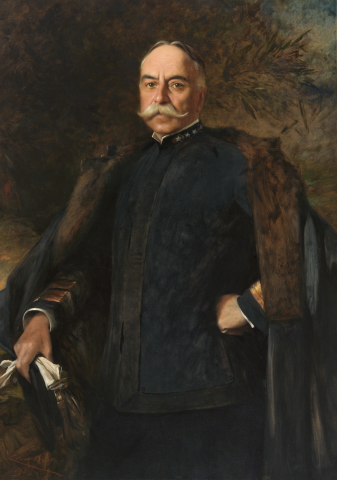
Admiral George Dewey (1837–1917)
On May 1, 1898, the first shots of the War of 1898 rang out under the command of Commodore George Dewey. Six U.S. war ships stationed in Hong Kong, known as the Asiatic Squadron, destroyed the Spanish flotilla harbored in Manila Bay while suffering few casualties of its own. After the Battle of Manila Bay, Dewey became a much-heralded celebrity and was promoted to admiral. From 1899 until his death in 1917, he held a powerful leadership position as president of the General Board of the Navy Department, which crafted naval policy.
Charles Schwab was president of Carnegie Steel Company in 1900, when he commissioned the French portraitist Théobald Chartran to paint Dewey and his wife, Mildred Hazen Dewey, in an homage to U.S. Naval Power. Schwab’s portrait commissions may be seen as one way in which the industrialist retained his influence on the U.S. Navy— and the millions of dollars spent on steel to trans- form its fleets into armored warships.